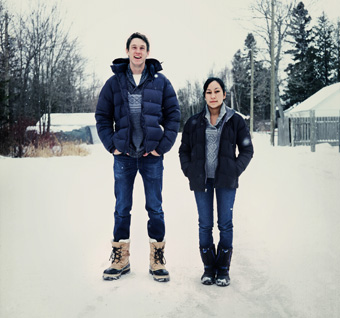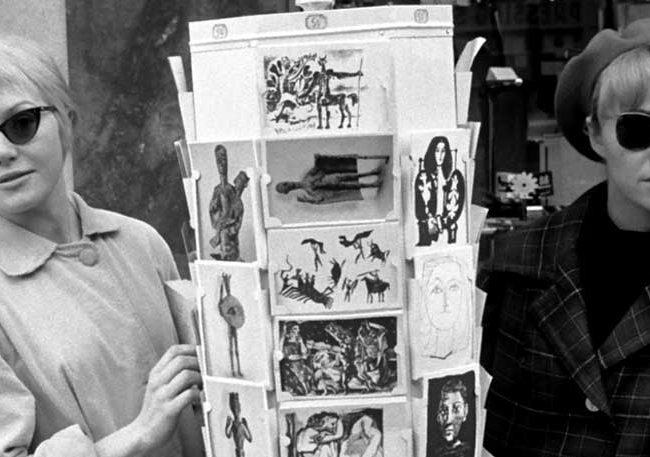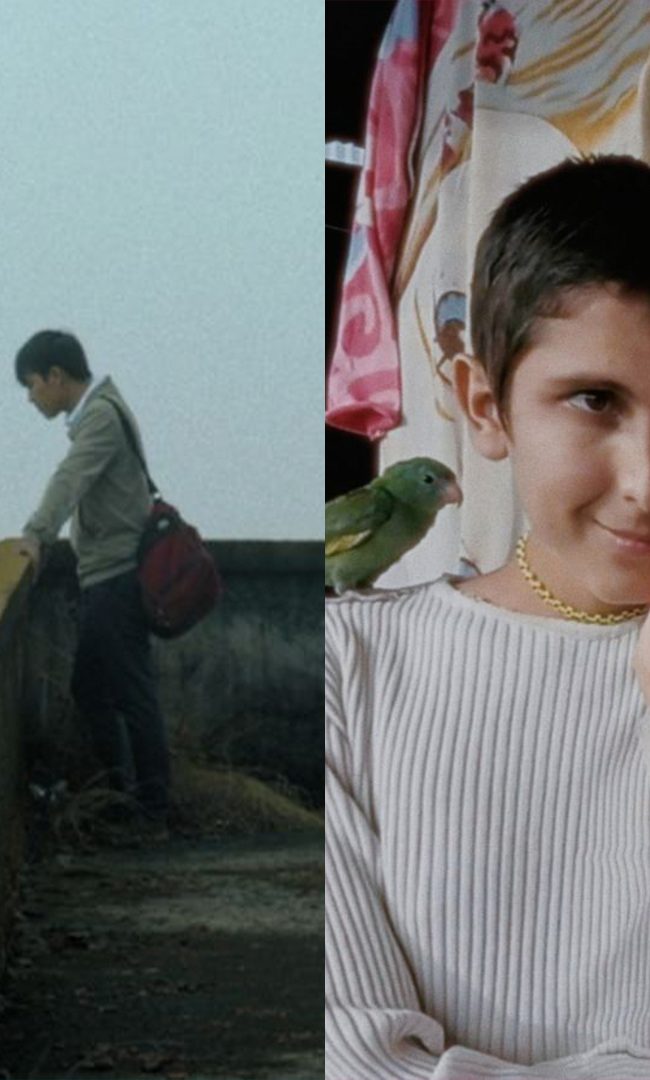A Conversation With Nick Bentgen (NORTHERN LIGHT)
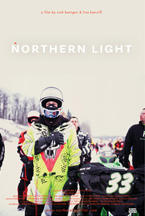 (Northern Light world premiered at the 2013 True/False Film Fest. It is being distributed by Icarus Films. It screens theatrically at Nitehawk Cinema on June 14th and 15th, 2014, before getting a full week run at Maysles Cinema starting on June 16th. Visit the film’s official website to learn more.)
(Northern Light world premiered at the 2013 True/False Film Fest. It is being distributed by Icarus Films. It screens theatrically at Nitehawk Cinema on June 14th and 15th, 2014, before getting a full week run at Maysles Cinema starting on June 16th. Visit the film’s official website to learn more.)
I’ve known Nick Bentgen since our halcyon days at NYU film school in the mid-aughts. Although he was a year or two behind me in class, I knew him as that tall, blue-eyed kid from Wisconsin with the loud laugh and sharp eye. He worked on my thesis short in the lighting department and we’ve traveled in the same circles ever since. We crossed paths a few times on the film festival circuit last year, culminating in a bleary after hours bar crawl through the dingiest dives of Vienna. Nick was at the Viennale in support of his superlative documentary Northern Light, a poetic mediation on family and landscape in Michigan’s Upper Peninsula (though Bentgen shot and directed, he shares an “a film by” credit with producer Lisa Kjerulff). I first caught Northern Light at BAMCinemaFest last summer and its haunting images and modest yet compelling characters have stuck with me ever since. On the eve of his movie’s theatrical release in NYC, I sat down with Bentgen in Carroll Gardens to drink beer and talk about landscape, cinematography, and the shitty TVs in Bobst Library.
Hammer to Nail: We both made films in snowy northern locations that we had personal ties to—you in Michigan and me in Maine. But neither of us lives in these places anymore. We both live here, in Brooklyn. What is it about the Upper Peninsula that drew you to make a movie there? Do you think that it was necessary to have that dual perspective as both an insider and an outsider to really capture it truthfully?
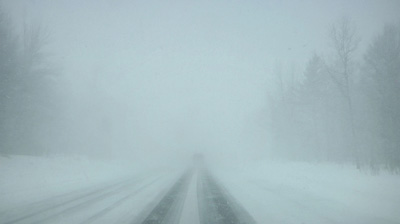 Nick Bentgen: I was really drawn to the peninsula because I had spent time there when I was a kid. My dad is from there, and my grandma and grandpa lived up there all their lives. My grandpa worked on the Ford boats on the great lakes. He would spend a long time out on a ship and would come home only occasionally. And then when they retired they lived in a cabin up in Moran, which is right over the bridge. I remember growing up and already feeling like I wasn’t of that culture, because I grew up three hours south. There were all these stories, kind of like folklore. Because it’s so cold, because everyone relies on the land, there’s this self-sufficient mentality. So I kind of grew up wondering what that would be like. When I grew older, I thought I wanted to make a film about this landscape, so I went up there and lived in this cabin that my grandfather left. He died 15 years ago but left this cabin and it’s tiny. I moved there for three weeks and thought that I could write something. It was kind of like The Shining or something like that. [NB laughs] But I really didn’t put myself into the community at all until the last couple of days; then I started going to bars and meeting people and I heard about this race that was going on in “The Soo.” So I went there. You come up over this ridge and there were suddenly 10,000 people, which was more people than I had seen in the entire three weeks. So I thought, “Fuck writing a script, I need to take out a camera and meet some people and really find out what this world is about.”
Nick Bentgen: I was really drawn to the peninsula because I had spent time there when I was a kid. My dad is from there, and my grandma and grandpa lived up there all their lives. My grandpa worked on the Ford boats on the great lakes. He would spend a long time out on a ship and would come home only occasionally. And then when they retired they lived in a cabin up in Moran, which is right over the bridge. I remember growing up and already feeling like I wasn’t of that culture, because I grew up three hours south. There were all these stories, kind of like folklore. Because it’s so cold, because everyone relies on the land, there’s this self-sufficient mentality. So I kind of grew up wondering what that would be like. When I grew older, I thought I wanted to make a film about this landscape, so I went up there and lived in this cabin that my grandfather left. He died 15 years ago but left this cabin and it’s tiny. I moved there for three weeks and thought that I could write something. It was kind of like The Shining or something like that. [NB laughs] But I really didn’t put myself into the community at all until the last couple of days; then I started going to bars and meeting people and I heard about this race that was going on in “The Soo.” So I went there. You come up over this ridge and there were suddenly 10,000 people, which was more people than I had seen in the entire three weeks. So I thought, “Fuck writing a script, I need to take out a camera and meet some people and really find out what this world is about.”
H2N: It’s interesting that your first impulse was to make a narrative film, because the film has such a narrative quality to it. It’s about these people and the race, and the landscape, but it’s not necessarily highly anthropological or issue-based.
NB: I think part of it is that I connected to documentaries much later in my life. So I feel like the backbone of my storytelling sensibilities is always going to be “how would this play out as a narrative film?” I was thinking about what you said about being an outsider. I almost feel like the footage I shot the first month I was there, when I didn’t know Walt or Isaac or Emily all that well, I had this barrier of making sure the framing was perfect and paying attention to how the construction the film would play out [formally]. But the footage almost got worse the better I got to know them and I was more focused on their stories and their lives. But in terms of being an outsider, the film definitely has that perspective. Sometimes I wonder if the film would have been different if I had grown up there and lived there all my life.
H2N: For me, part of wanting to make a film in Maine was that I felt like I had access to it, having grown up there. But I found that not actually living there anymore—having one foot in and one foot out— to be extremely helpful to the process. You need a certain objectivity to see a place for what it is, but you also want to have some sort of emotional connection to it.
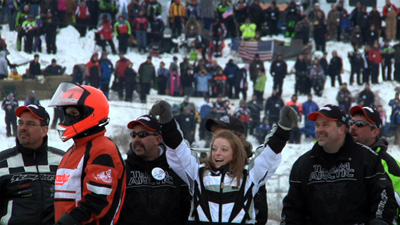 NB: There are scenes in the movie where the people I’m filming don’t share the same perspective on life that I do and that’s what interests me. But of course you also have commonalities with your subject. I can’t imagine making a movie in Williamsburg. Although there are filmmakers that do and they can definitely make it interesting. I don’t know how to fix a car, so I can find something that might be mundane for people who know how to fix car to be really interesting because I don’t know anything about it.
NB: There are scenes in the movie where the people I’m filming don’t share the same perspective on life that I do and that’s what interests me. But of course you also have commonalities with your subject. I can’t imagine making a movie in Williamsburg. Although there are filmmakers that do and they can definitely make it interesting. I don’t know how to fix a car, so I can find something that might be mundane for people who know how to fix car to be really interesting because I don’t know anything about it.
H2N: On Bluebird it was really interesting when we were shooting the loggers. We asked them a ton of questions and got feedback on how they did things. It was like, “Wow, look at these crazy machines and everything they can do.” On our location scout, the crew was just staring in awe as these machines shredded trees with incredible ease and it was kind of shocking and amazing. Then when we showed up with our equipment ready to shoot, all of a sudden it was reversed and the loggers were standing around watching us work and asking us questions about the film equipment like, “What does that do?” It was same thing we did. [H2N laughs] So I feel like making a film can be a chance for the subject and filmmaker to observe each other in their own environments. You’re teaching each other about your specific worlds. How did you find your subjects, was it through this race?
NB: I was unemployed. I was tremendously unemployed. I was trying to work as a cinematographer and working for Pitchfork for like $300 a month or something like that, and at ad agencies in-house, and just the worst kind of jobs you can imagine where you have no voice. So I was being a horrible boyfriend and complaining a lot. Lisa, who I made the film with and who is also my girlfriend, she bought me a plane ticket [to Michigan] where there was a snowmobiling convention. She said, “You’ve been talking about this fucking movie forever. We’re either going to break up or you’re going to go up there for four days and try and meet some people.” [NB laughs] I remember going to this snowmobiling event and buying a ticket and walking around like I was a snowmobiler but not having any idea what I was talking about. I finally met the man who was on the board of the race. I got up the courage to walk up to him and say, “I want to film the race.” He said, “Of course. That’s awesome.” His name was Devin. He connected me to Isaac, who is kind of a premiere athlete. He was a young up-and-coming star. And then after I met him I said I wanted to meet other people, too, and Devin said there’s this hometown guy, who lives in the town where we do the race, and he’s been on a snowmobile since he could walk. That made sense to me structurally, to have the old salt and the young gun. It ended up being so much more than that. But they were the first people I connected with, and then after I started to film them, the world expanded exponentially.
H2N: So how long did it take them to really open up and allow you in their home?
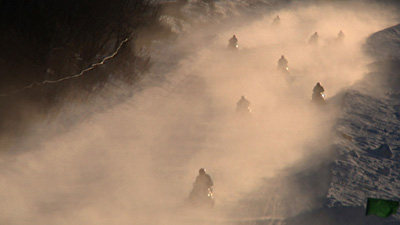 NB: Not long. I think the first 20 minutes of the film are from the first couple of weeks of shooting. Walt and his family were extremely generous and opened their home to us immediately. Walt has this deep voice and a cowboy-esque demeanor, so at first I was a little worried about what he might think. But then I got to know him and he was very inviting.
NB: Not long. I think the first 20 minutes of the film are from the first couple of weeks of shooting. Walt and his family were extremely generous and opened their home to us immediately. Walt has this deep voice and a cowboy-esque demeanor, so at first I was a little worried about what he might think. But then I got to know him and he was very inviting.
H2N: When he saw the final film do you think he expected more of a traditional ESPN biopic rather than a film with such an artful and abstract style?
NB: Maybe he thought it would be that when we first started shooting. But I filmed enough barbeques and dinners that it became obvious it wasn’t going to be traditional. I filmed Walt’s daughter giving birth! At a certain point it became obvious the movie wasn’t going to be just about snowmobiling and I’m glad he kept an open mind.
H2N: I love the opening of the film, especially the first 10 minutes. The way you set up the world with people doing routines, pumping gas, or feeding their dogs. There’s all this silence and landscape. The first line of dialog is kind of inaudible and it sets up this expectation that the dialog will just be another texture, and not necessarily something to pull narrative clues from. You also show that it’s a rough world—a kid gets knocked down on the ice, and the guy who wipes out on the snowmobile gets no sympathy. Was it your intention from the beginning to stay wide and observational and let the landscape and sound design tell the story?
NB: Part of it is that maybe I’m a greedy cinematographer that just wants to do vistas. [NB laughs] But it’s really one of the most beautiful places on earth. When you live in a place where it’s constantly 10-below, your whole life is affected by the weather. So I feel like the environment was the first thing that needed to be communicated.
H2N: I really responded to the routines you depict—the feeling of pumping gas and your hand is frozen on the pump, or the color of the sky in winter. I think you’re really sensitive to those kinds of textures.
NB: I think it’s because I grew up in that kind of environment, in Wisconsin, just over the border and I remember what those winters felt like.
H2N: There’s a lot of patience in the film with the shooting style. You don’t see a lot of straight verite these days, especially in films that that are character focused and about “real people” without there being an obvious social-issue angle. So what influenced the stylistic approach?
NB: I remember seeing Harlan County USA, in the library at NYU, which was like the worst place to see a film, there were like these CRT monitors…
H2N: In the cubicles? Where you check out the VHS tape? Yeah, I saw a lot of important films that way. [H2N laughs]
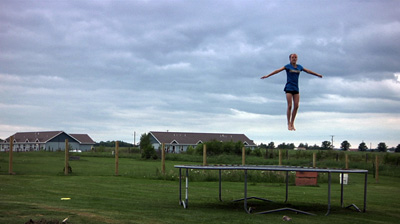 NB: It was really where I’d go to take a nap. [NB laughs] But every so often the film was too good to do that. Wiseman, sure. Definitely Maysles. My editor Dave Park showed me Running Fence and Gimme Shelter and Salesman, and I fell in love with those movies. The film you guys made, Brock Enright: Good Times Will Never Be The Same—I straight up ripped off the cinematography in that. My friend Anna Farrell’s movie Twelve Ways To Sunday… I think my friends were making great movies and I was like, “Okay, this is the way to show life on screen.” My friends were doing it and I wanted to see if I could do it too. But there were a lot of narrative films that were touchstones for me too, like Nashville and Two-Lane Blacktop.
NB: It was really where I’d go to take a nap. [NB laughs] But every so often the film was too good to do that. Wiseman, sure. Definitely Maysles. My editor Dave Park showed me Running Fence and Gimme Shelter and Salesman, and I fell in love with those movies. The film you guys made, Brock Enright: Good Times Will Never Be The Same—I straight up ripped off the cinematography in that. My friend Anna Farrell’s movie Twelve Ways To Sunday… I think my friends were making great movies and I was like, “Okay, this is the way to show life on screen.” My friends were doing it and I wanted to see if I could do it too. But there were a lot of narrative films that were touchstones for me too, like Nashville and Two-Lane Blacktop.
H2N: What I liked the most about your shooting style were all the patient frames. The most classic example of it in the film is when you see a guy standing at the edge of the woods and a snowmobile races by and you’re just holding, holding, holding, on this guy, and you’re like “why is this shot continuing?” But then… ZOOM. The snowmobile comes by again for a second lap and then you cut. That’s just the quintessential Northern Light shot to me. You’re not turning the camera off, you’re not panning with the snowmobile, you’re respecting the frame and not prioritizing action. I think that patient approach to cinematography in documentary is actually pretty rare. I really appreciate that way of observing something, of not chasing the story but letting it come to you.
NB: Yeah, I felt the same way about Bluebird. We share a lot of sensibilities—and the score…
H2N: Oh I’ll get to the score. [H2N laughs] Also, with the characters, I love them and I feel like they’re people I know. But there is some causal racism and homophobia in there that obviously exists in small towns like this. You don’t shy away from it. Money is tight for them as well and they’re struggling to make house payments. Yet this hobby is very expensive and you feel like maybe they’re spending their money irresponsibly. Yet this is obviously something that gives them great meaning. Were you consciously trying to subvert the idea of the working class hero or some kind of notion of the saintly poor? They’re not saints and they’re not hicks. It’s very neutral and non-judgmental either way.
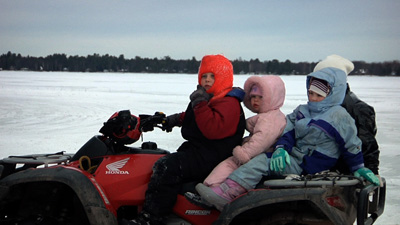 NB: It just felt like everything was applicable. Maybe it’s egregious, maybe it’s over the top, but I felt like, “Fuck it, I want make life the movie, you know?” [NB laughs] That was what I decided to do. Just replicate the moments that stood out to me when I was there. It was an intuitive choice. I just kept asking, “What would make the audience feel like they were there?” And I felt like some of the stronger words and stronger feelings are the ones that stand out and the ones you remember, regardless if what is said is something you agree with or not. It’s important to include it. There’s no truth, you’re lying as soon as you pick up a camera because you’re framing things out. People are going to interpret whatever is being said however they want when they watch the film, so I don’t want to speak too much about it, but Marie isn’t going to be upset that I included her money troubles because that’s her life and she’s proud to be making it through. She works harder than I do everyday. I remember her sleeping two hours a night to go work at Walmart, and then go to class, and then go home and cook dinner. There’s a way that you could shoot that which is patronizing, but I think the best way to depict it is just to be present. And you want to replicate that in the editing, too.
NB: It just felt like everything was applicable. Maybe it’s egregious, maybe it’s over the top, but I felt like, “Fuck it, I want make life the movie, you know?” [NB laughs] That was what I decided to do. Just replicate the moments that stood out to me when I was there. It was an intuitive choice. I just kept asking, “What would make the audience feel like they were there?” And I felt like some of the stronger words and stronger feelings are the ones that stand out and the ones you remember, regardless if what is said is something you agree with or not. It’s important to include it. There’s no truth, you’re lying as soon as you pick up a camera because you’re framing things out. People are going to interpret whatever is being said however they want when they watch the film, so I don’t want to speak too much about it, but Marie isn’t going to be upset that I included her money troubles because that’s her life and she’s proud to be making it through. She works harder than I do everyday. I remember her sleeping two hours a night to go work at Walmart, and then go to class, and then go home and cook dinner. There’s a way that you could shoot that which is patronizing, but I think the best way to depict it is just to be present. And you want to replicate that in the editing, too.
H2N: What do you think that the race means to the characters in the film?
NB: It’s a community thing first, for everybody involved—the cheerleading, the bodybuilding, and the race. It’s an important way for people to express themselves. I really connected with it. I said to Lisa, “This is just insane that people would travel down a track going 116 miles an hour and risk their lives for not a very big grand prize.” But meanwhile, I was making a movie that was going to screen at art house film festivals at best. I was also doing something that was weird and offbeat and pouring all of our money into it. It was very similar to these guys and their snowmobiles.
H2N: I guess that was what I connected to this second time watching the film. Life is hard, but there are these ways in which we choose to express ourselves where we can transcend. I felt really connected to everyone in the film because of that. They’re trying really hard to be good at this one thing and to express themselves.
NB: Absolutely. It’s a creative outlet.
H2N: Tell me a little bit about working with Dave Park on the editing. How did you find a balance between telling the story and letting it unfold in a natural way? There must have been a temptation to spell things out more. You do use some inter-titles, but they’re not instructive, they’re purely informational in like a sports way rather than in a narrative way.
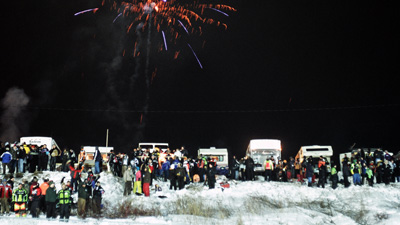 NB: With the [on screen] titles, we tried to approach things with rules. The easiest way to communicate with your collaborators is to have a mutually agreed upon framework. We can show this but we can’t show this. The rules, ultimately, are totally arbitrary when you really think about them. But it helps to say something like, “Whenever possible try to keep the camera static,” or, “We can’t show titles on screen that just say Walt or James.” The rule we had there was that you needed to be able to find that information in a publication, like a farmer’s almanac or the race results. We chose to put the humidity and temperature on screen because it directly affects the strategy or racing—how you jet your engine. It’s applicable to the passions of the people involved. In terms of editing, Dave really wrote the film with us. He and Lisa and I worked for about a year sitting around the editing station. For the longest time the movie was like three hours and we had other story lines but Dave was really good at focusing the film and challenging the footage. The pacing of it, he was very in charge of that. He would say, “You clearly shot this to play out without coverage.” Every edit is basically acknowledging that there’s a time cut, because we only had one camera. We only break that rule a few times. Dave kept us in check.
NB: With the [on screen] titles, we tried to approach things with rules. The easiest way to communicate with your collaborators is to have a mutually agreed upon framework. We can show this but we can’t show this. The rules, ultimately, are totally arbitrary when you really think about them. But it helps to say something like, “Whenever possible try to keep the camera static,” or, “We can’t show titles on screen that just say Walt or James.” The rule we had there was that you needed to be able to find that information in a publication, like a farmer’s almanac or the race results. We chose to put the humidity and temperature on screen because it directly affects the strategy or racing—how you jet your engine. It’s applicable to the passions of the people involved. In terms of editing, Dave really wrote the film with us. He and Lisa and I worked for about a year sitting around the editing station. For the longest time the movie was like three hours and we had other story lines but Dave was really good at focusing the film and challenging the footage. The pacing of it, he was very in charge of that. He would say, “You clearly shot this to play out without coverage.” Every edit is basically acknowledging that there’s a time cut, because we only had one camera. We only break that rule a few times. Dave kept us in check.
H2N: Yeah, you gotta make the rules so you can break them. [H2N laughs] I actually appreciated when you did have an aside in the story. For example, the story of the girl, who the family takes in because her mom was arrested for drugs. There’s a sequence there where you’re learning about that and what they went through. But I think tangents like that are what makes the film feel grounded. Did you ever feel pressured to cut it even tighter and keep it focused specifically on the race?
NB: It was a realization for me to see Walt, without a bat of an eye, make this decision to take somebody into his home that needed help. It really speaks to the community at large that Walt lives in. I felt like it belonged in the film because it’s about what it’s like to be from there. That was never on the chopping block.
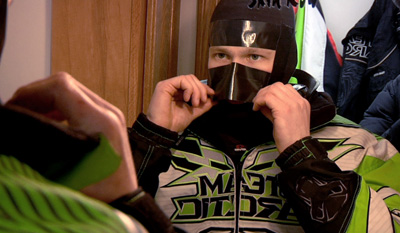 H2N: Once it builds to the race, it’s really tough as a viewer because you’ve spent so much time with these people and you’re conflicted about who you want to win. There’s almost this existential feeling of, every racer here has a back-story and yet not everyone can walk away a winner. Did you feel that way yourself?
H2N: Once it builds to the race, it’s really tough as a viewer because you’ve spent so much time with these people and you’re conflicted about who you want to win. There’s almost this existential feeling of, every racer here has a back-story and yet not everyone can walk away a winner. Did you feel that way yourself?
NB: Yeah. I remember telling both Walt and Isaac that I hoped their race went well, and they both called me out on my bullshit and said, “Who do you really want to win?” [NB laughs] I was rooting for both of them—I wanted one of them to win, because I wanted a good story. There’s a whole money politics side to the race that is totally uneven, which speaks to larger sporting events in general. It’s all about the money, ultimately. Who has the most money. And it’s not about winning for everybody, it’s “did you run the best race you could,” which is admirable.
H2N: Tell me about working with Saunder [Jurrians] and Danny [Bensi], the film’s composers. What I really like about the music is that it’s so epic and intense, and occasionally you’ll have that contrast with quotidian images like the Walmart parking lot. The music is so soaring and orchestral and that juxtaposition really worked for me to elevate something so mundane to a kind of cinematic level.
NB: It’s funny because I didn’t really ever think of it as a breach of documentary ethics or anything like that, but some people might. Or maybe they feel like it’s a layer that wasn’t necessary. But I felt like it absolutely was. Because up in the upper peninsula you have people who seem gruff and rough around the edges, but then you meet them and all of a sudden they’re telling you about their lives and being really sentimental, and that does not happen in New York. So I feel like that sort of soaring feeling comes from my relationship with the people I met. So even when Maria is waking up early and going to Walmart, collected over time, it develops into something operatic. I kind of knew I needed a bold score or nothing. There’s a history to the Upper Peninsula that you feel when you look up at the stars. Ultimately I feel like classical music spoke to the generational feeling of living in that place. [Saunder and Danny] are brilliant musicians.
H2N: Did you see Enemy?
NB: Yeah, their score for that is brilliant. And their score for your movie is so different and it’s so brilliant the way it ties the movie together.
H2N: They have this thing where they have their own signature style, but it’s always different, and it’s always tailored to the film, so they get to be music auteurs and still work in the world of film composition which is usually kind of generic because composers have to be such chameleons. But they’ve somehow managed to be both which I think is pretty amazing. So this was a big Nick Bentgen year. You had Teenage, Hide Your Smiling Faces, Ballet 422, Northern Light, your awesome “Breathless” music video for Small Black… you’re directing documentaries, shooting narratives and docs, along with directing commercials and music videos. I think people who do a little bit of everything would like to know how you manage all that. How do you find a balance?
NB: It’s totally different every time. Northern Light was something that balanced me out. Lisa and I made it together, and it was a collaboration and a side project. We were the sole authors. It balanced me out as a cinematographer not to have to always campaign for my own ideas. Cinematographers waiver from being one of the most important people on set to one of the least important, depending on the project. It involves a lot of relationships. Every director I’ve worked for has been a huge mentor for me. That’s why I jump on a project as a cinematographer. Matt Wolf is a dream to have next to you with his intelligence. It makes me a better filmmaker. Someone like Dan Carbone, [Hide Your Smiling Faces] it’s just his movie for every frame, and yet he gave me so much freedom. He was very trusting, and yet the movie is his. I always feel like I’m a better cinematographer if I have my own project on the side, so I’m not fighting against somebody else’s vision, just so I have my own voice.
H2N: What’s next?
NB: I don’t know yet. I’m balancing a few different projects that I think are hopefully new and different for me. I definitely want to keep documentary in my blood. I’m excited to go into more narrative territory but I hope that documentary ethos always comes through.
— Lance Edmands







